Graffiti in Japan - Creativity, Cultural Tensions, and Legal Controls
MINTO│© Elena Calderón Aláez
Japan’s graffiti scene navigates complex socio-cultural and legal landscapes, manifesting a form of creative tenacity that adapts within strict boundaries. This hidden yet dynamic urban art community persists through secluded works and designated murals, contributing to a growing subculture. Despite harsh penalties and Japan's cultural reverence for cleanliness and order, a burgeoning network of graffiti artists continuously pushes the limits of expression, challenging traditional norms and enriching Japan's urban environment.
Cultural and Legal Challenges to Graffiti in Japan
Graffiti in Japan is primarily shaped by stringent anti-vandalism laws, extensive surveillance, and a cultural ethos valuing orderliness in public spaces. Japanese laws impose severe penalties on graffiti, including hefty fines and potential jail time, while the huge presence of security cameras in cities like Tokyo discourages or prevents potential graffiti artists from creating art in public spaces due to the risk of being caught and its possible detection and legal consequences.
In contrast to Western cities, where graffiti often serves as a social or political outlet, Japanese graffiti occupies a marginal space and is often viewed as an urban blemish, with "rakugaki" (落書き), the Japanese word for graffiti, carrying connotations of mere "doodles."
The aesthetic sensibilities in Japan lean toward controlled urban visuals, with a strong emphasis on public cleanliness. Cities like Tokyo meticulously remove graffiti in preparation for international events, emphasizing a national pride in well-maintained public spaces. This environment often forces Japanese graffiti artists into hidden locations or relegated legal spaces, creating a treasure hunt for enthusiasts. The tension between the cleanliness ideal and the gritty, expressive nature of graffiti reflects an enduring cultural clash within Japanese society.

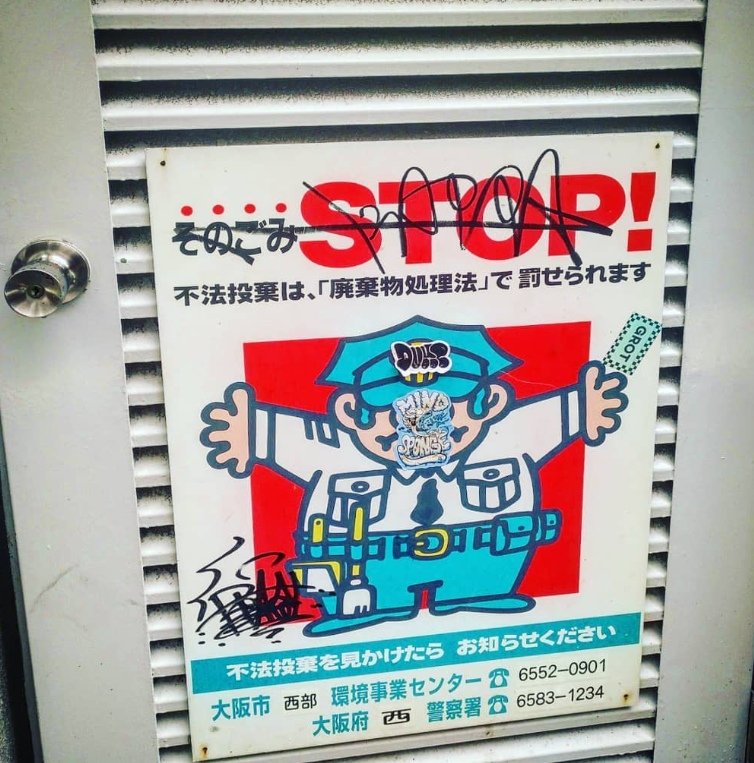

Urban Aesthetics and Cultural Attitudes
While Japan’s urban landscape appears visually vibrant, with neon lights and colorful advertisements, graffiti is generally unwelcome. Public spaces are seen as shared assets, fostering an aversion to anything that might disrupt communal harmony, including unauthorized art. Yet, in areas known for a more eclectic culture, such as Shibuya, Shinjuku and Harajuku, graffiti finds limited acceptance, allowing for legal murals that become rare, open showcases for artists to explore bolder themes without the constant specter of surveillance.
Iconic Groups and Their Impact
Despite constraints, Japanese graffiti artists have made their mark through groups like 246 and 24K (24Killaz), whose members employ rapid tagging and aggressive, recognizable styles on Tokyo’s commercial shutters and hidden spots. The 246 crew's work, known for large, geometric lettering, became emblematic of Tokyo's graffiti culture during the '90s and early 2000s, inspiring subsequent generations. Meanwhile, 24K's quick tags and bold sticker art contributed to a stylistic exchange that extended beyond Japan to other parts of Asia, with members leaving distinctive tags across the region.
The Significance of 246
The crew’s name, 246, is rooted in Tokyo's geography, referencing National Route 246, a major highway that runs through the heart of the city. This choice symbolizes their ambition to cover the city with their work, extending their reach as far as the highway stretches. This theme of “visibility and reach” aligns with graffiti culture’s core principle: to make one's presence known.
A Multinational Collective of Artists
Crew 246’s diverse lineup, including members like MINTO, MQ, SODUH, PEAR, RESQ, SAYM, YU, NOE and ZOMBRA, combines local and global talent, allowing the crew to introduce versatile styles into Japan's graffiti scene. WANTO, the Japanese founder, is a renowned figure, celebrated for his large block-letter pieces in high-visibility areas. His dedication has solidified his legacy within Tokyo's graffiti culture.
Tokyo's graffiti scene also benefits from foreign artists who bring fresh ideas and international perspectives. Artists like UFO907, ZOMBRA, REMIO, TONA1, ANDRÉ SARAIVA, SPACE INVADERS, have left their mark on Tokyo. The influx of these artists adds layers of global dialogue, highlighting Tokyo as a transient yet potent ground for graffiti’s diverse expression.

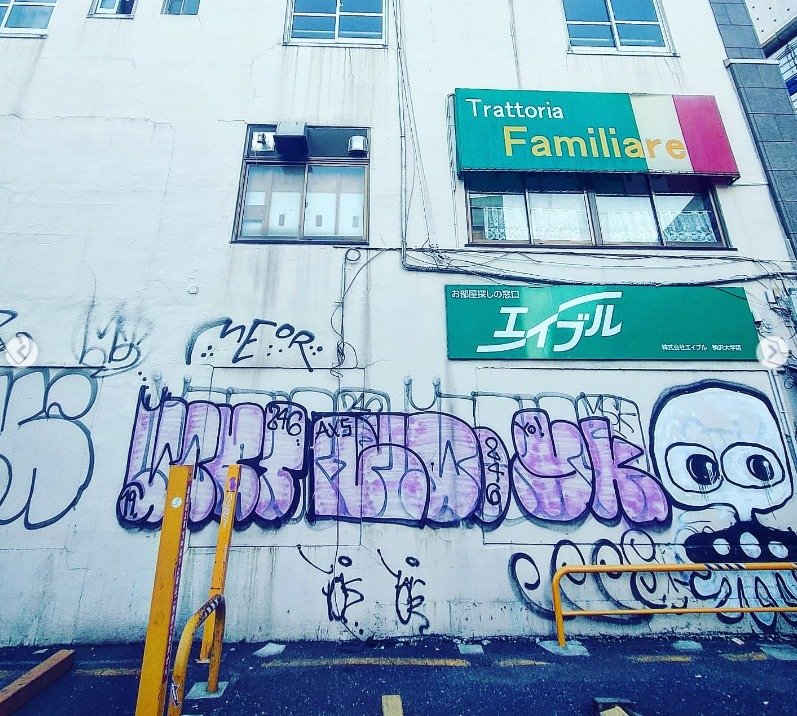

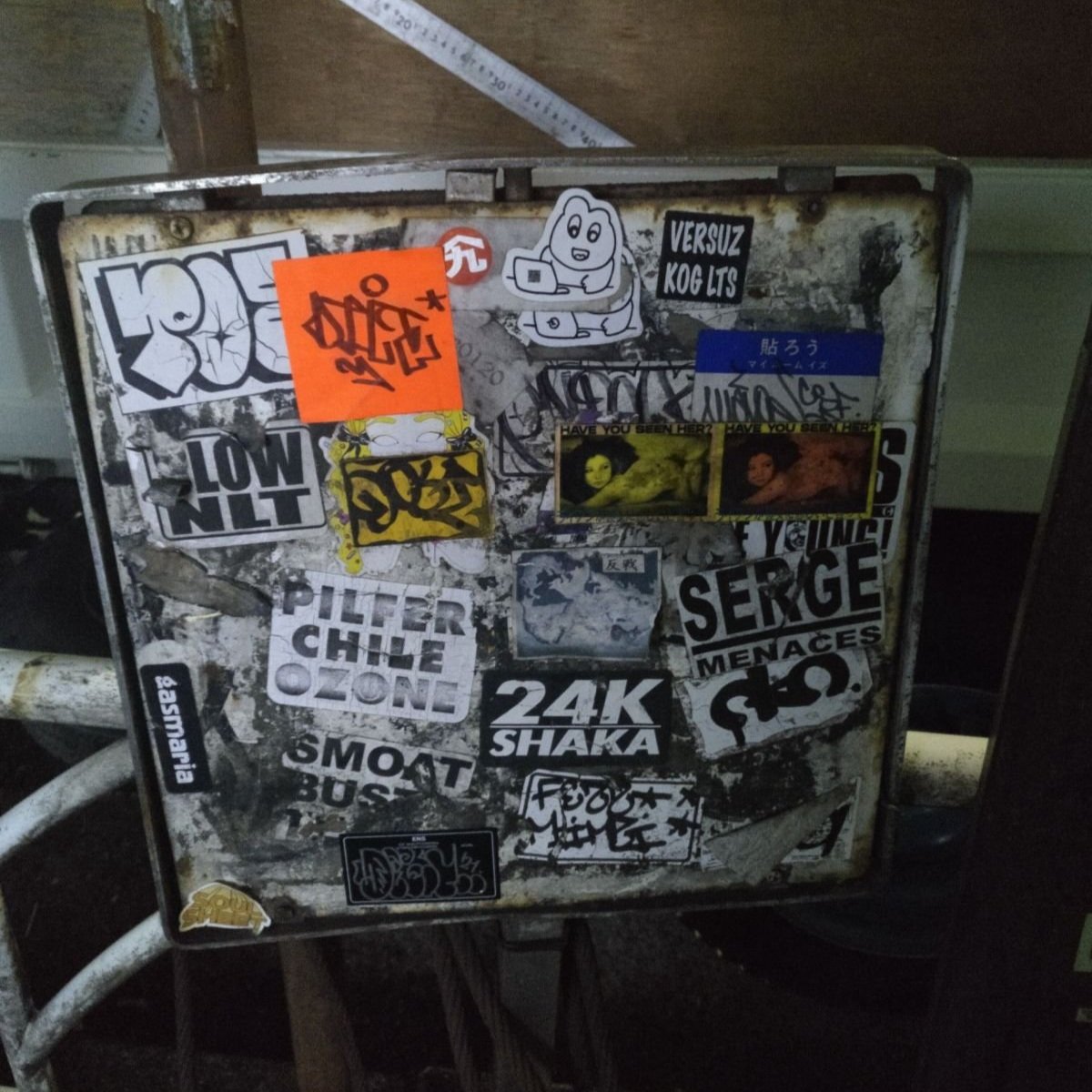
Japan’s Endemic Graffiti Artists - Unique Styles and Street Signatures
Tokyo’s graffiti scene is a diverse and evolving community, with artists expressing their creativity through unique styles and techniques. Writers like Livla, ECY, and BIEN bring minimalist, easily recognizable typography and unimaginable locations, while SCOTCH and SOS add sophistication to the traditional tag. TOKYO IS YOURS blurs the line between graffiti and urban quotes, making statements that have adorned Tokyo since 2014.
AKIONE stands out as one of the few female writers in Japan, known for her intricate wildstyle and “kawaii” girl character that appears across sprays and stickers, and WOOF-ONE decorates the city with his character designs. MAW, CRASTY and UDON add their distinct cartoonish and ghostly characters to Tokyo’s walls, while the brother duo SHART and BAHK (and more member from the Tokyo Zombie Crew), collaborating on murals and anti-racism messages in Tokyo and collective exhibitions in museums and art galleries. ZERA and YUSE bring humor with cartoonish faces, with YUSE also crafting small sculptures for public display.
Adding a unique flair, QP merges symbols and letters into a complex, monochrome style that’s less legible yet captivating. Known for his adaptability, he experiments with various formats and spaces and often collaborates with galleries. Traditional Japanese influences appear in ESSU’s paste-ups, and KICHI’s three-eyed alien brings a surreal touch. HENOHENOMOHEJI uses hiragana to form facial characters, and 山田 丸 [Yamada Maru] leaves recognizable characters, especially in Yokohama. Altogether, these artists create a rich tapestry of styles, each one contributing to the visual conversation that defines Tokyo's dynamic street art scene.
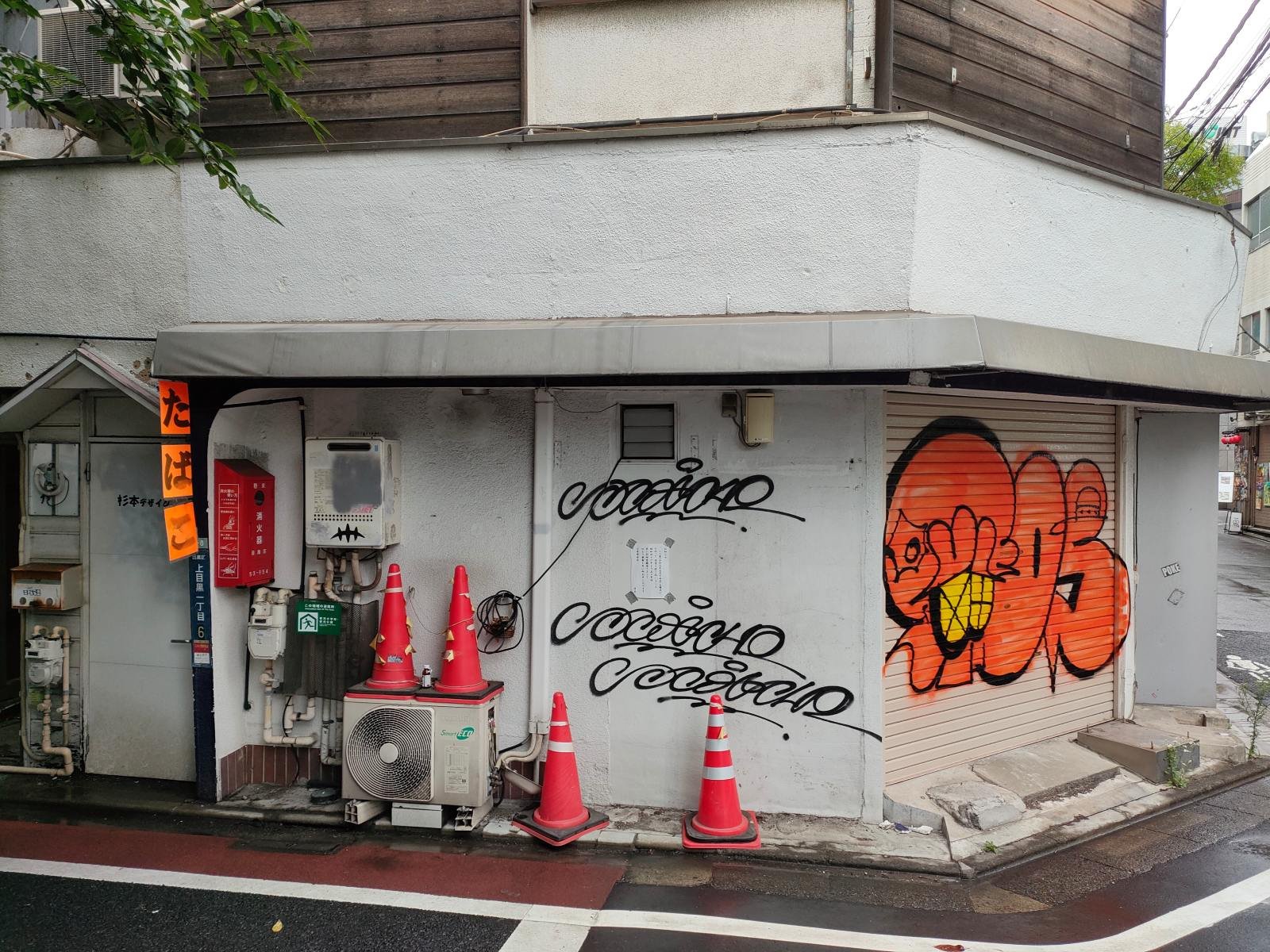

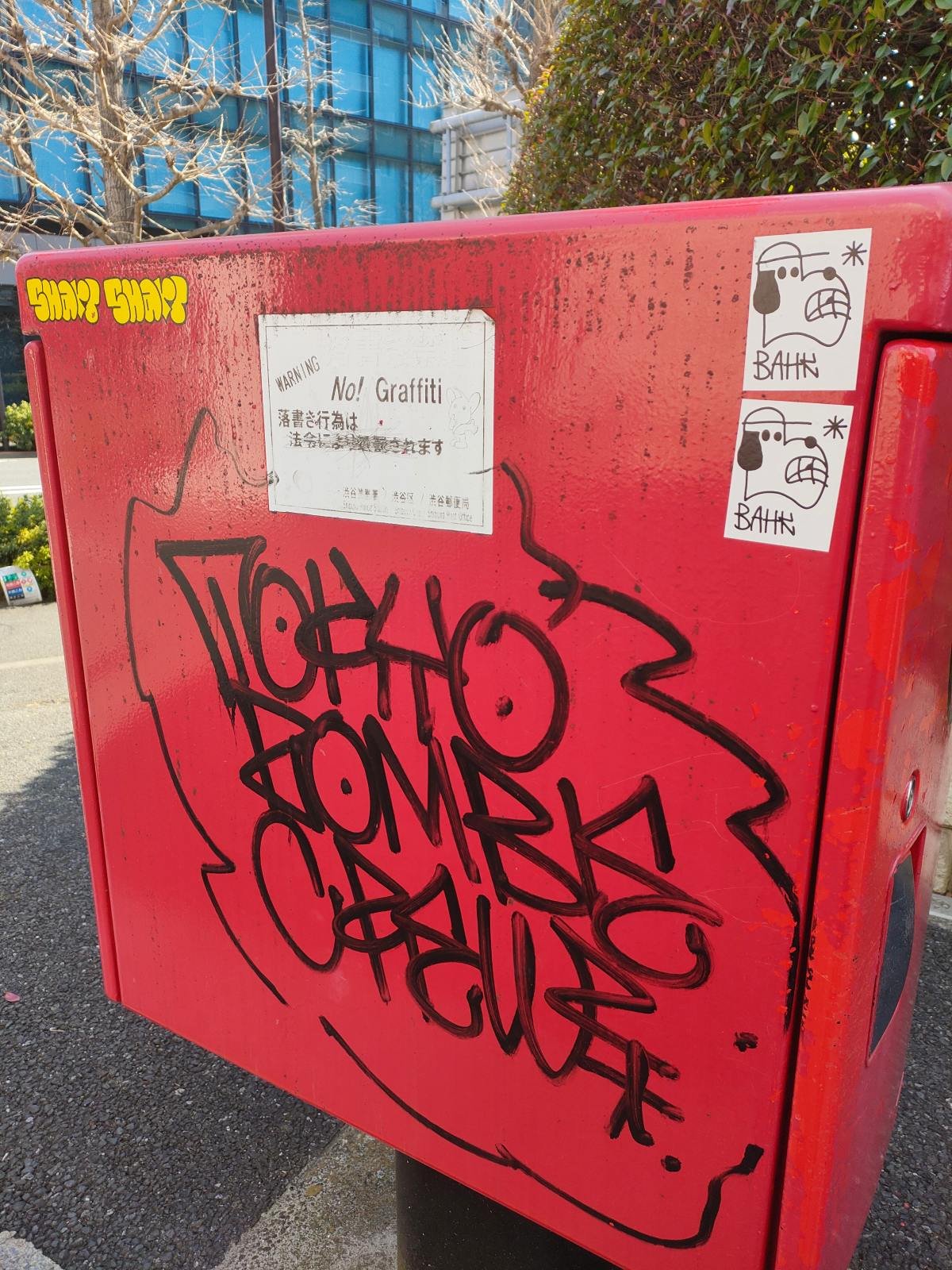
Women in Japan’s Mural Movement
Japan’s muralist community is particularly notable for the number of female artists contributing to its growth. Lady Aiko, originally from Tokyo and based in Brooklyn, explores themes of gender and empowerment in her work, blending Japanese influences with a commitment to gender equality. Meanwhile, Shiro One merges hip-hop elements with vibrant portrayals of femininity, and Mina Hamada’s murals bring an improvisational, childlike energy to urban spaces. These artists have not only redefined street art within Japan but have also expanded its cultural reach abroad.
Other artists like ESOW, with traditional Japanese influences, and HITOTZUKI (the couple Kami and Sasu), whose decorative murals evoke harmony, further demonstrate the unique diversity of Japan's urban art scene. DRAGON76's dynamic live-painting performances, and KAZZROCK’s and TABOO1 representing a more traditional graffiti with American influences, continue to shape Tokyo's visual identity, exemplifying the interplay between local tradition and contemporary street art.


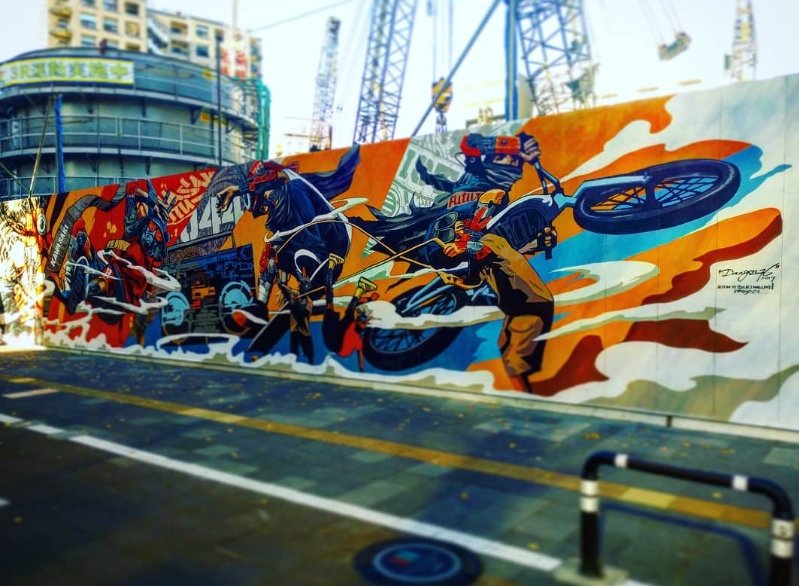
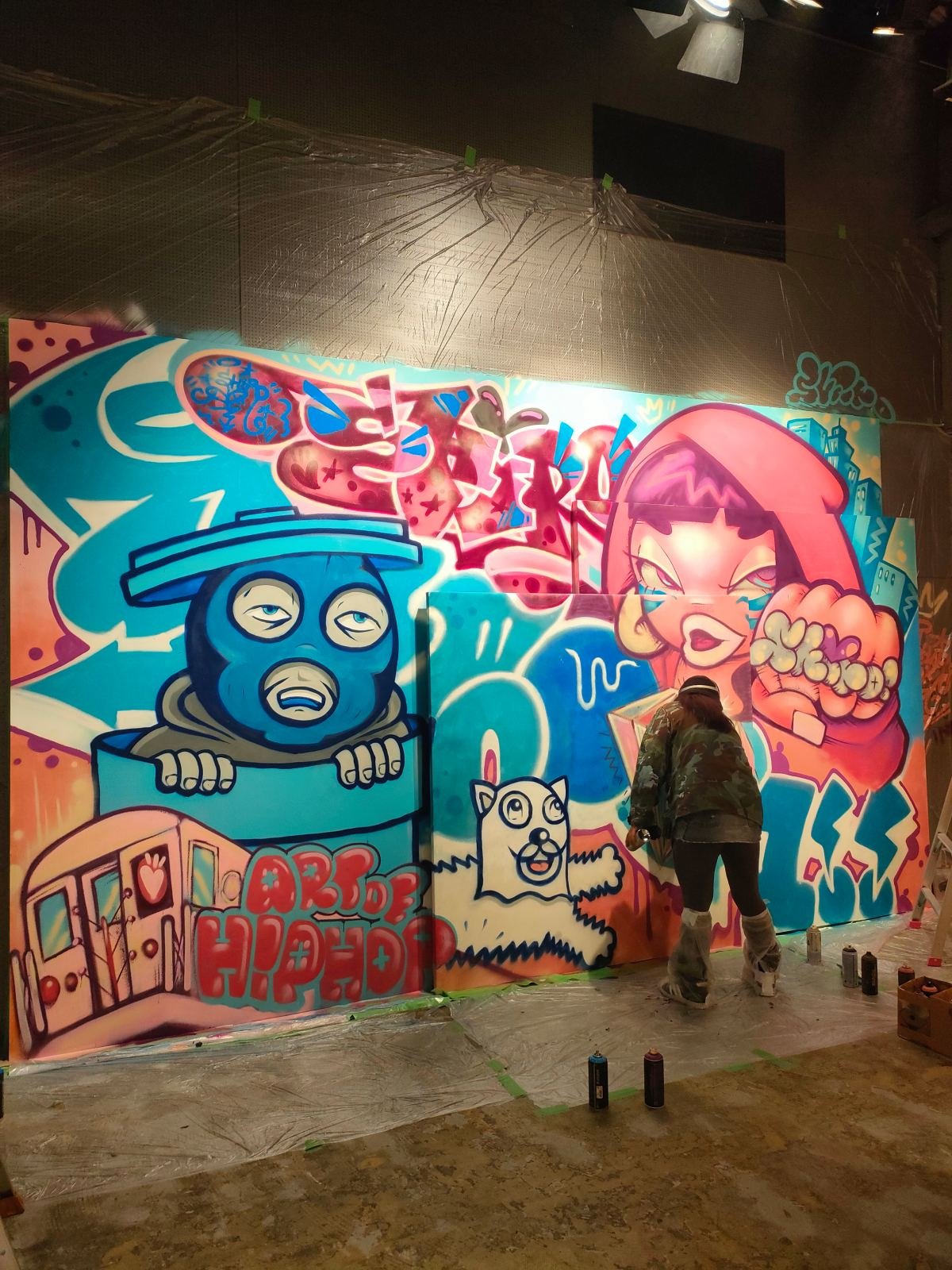
The Rapid-Style Graffiti Culture
In Japan, graffiti styles tend to focus on quick, low-effort techniques like tags, throw-ups, and stickers. This is largely due to limited time and the need for rapid execution in crowded urban areas like Tokyo. Elaborate pieces are rare within the city, as these require more time and pose a greater risk. Instead, stickers are especially prevalent on billboards and traffic signs, serving as an effective, fast, and relatively low-risk way for artists to spread their names. Only in specific places, like legal walls, outskirts, skate parks or abandoned spots, can more detailed graffiti pieces be found, allowing artists the space and time to showcase more intricate work.
The Growing Presence of Legal Murals and Community Support
Legal mural spaces in Japan allow artists to explore techniques and themes that might be risky or impractical on the surveilled streets of Tokyo. These spaces are an essential compromise, providing creative freedom while still respecting Japan’s social norms. Shibuya, Harajuku, Tennozu Isle stand out as neighborhoods where this visual language has become an evolving dialogue between local and global influences, marking a tentative shift towards a more accepting stance on graffiti. Social media platforms have also become instrumental for Japanese muralists, offering a way to share their work openly, access larger canvases, and foster supportive communities that celebrate street art as both expression and art form.
© Elena Calderón Aláez
Conclusion - Graffiti's Resilience in Japan
Japan’s graffiti scene embodies a unique resilience, one shaped by legal pressures, cultural expectations, and the determination of artists who continue to redefine urban spaces. This community, though small, is increasingly recognized for its artistic contributions, finding ways to maintain a presence in both hidden corners and legal spaces. As the tension between tradition and creative freedom unfolds, Japan’s urban art remains a testament to its artists’ endurance and evolving relationship with societal norms. In time, graffiti may become a permanent fixture in Japan’s urban landscape, symbolizing a dialogue between the global graffiti movement and the distinctive values of Japanese culture.





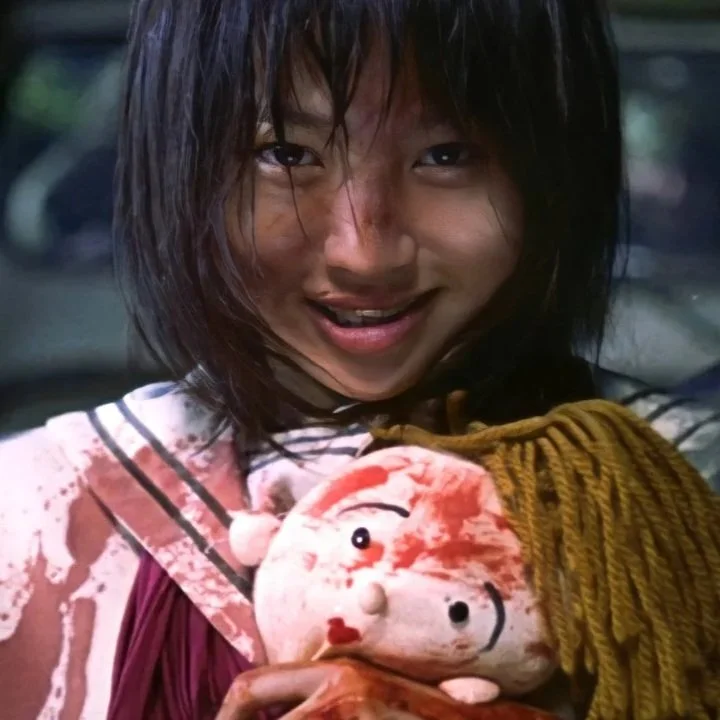
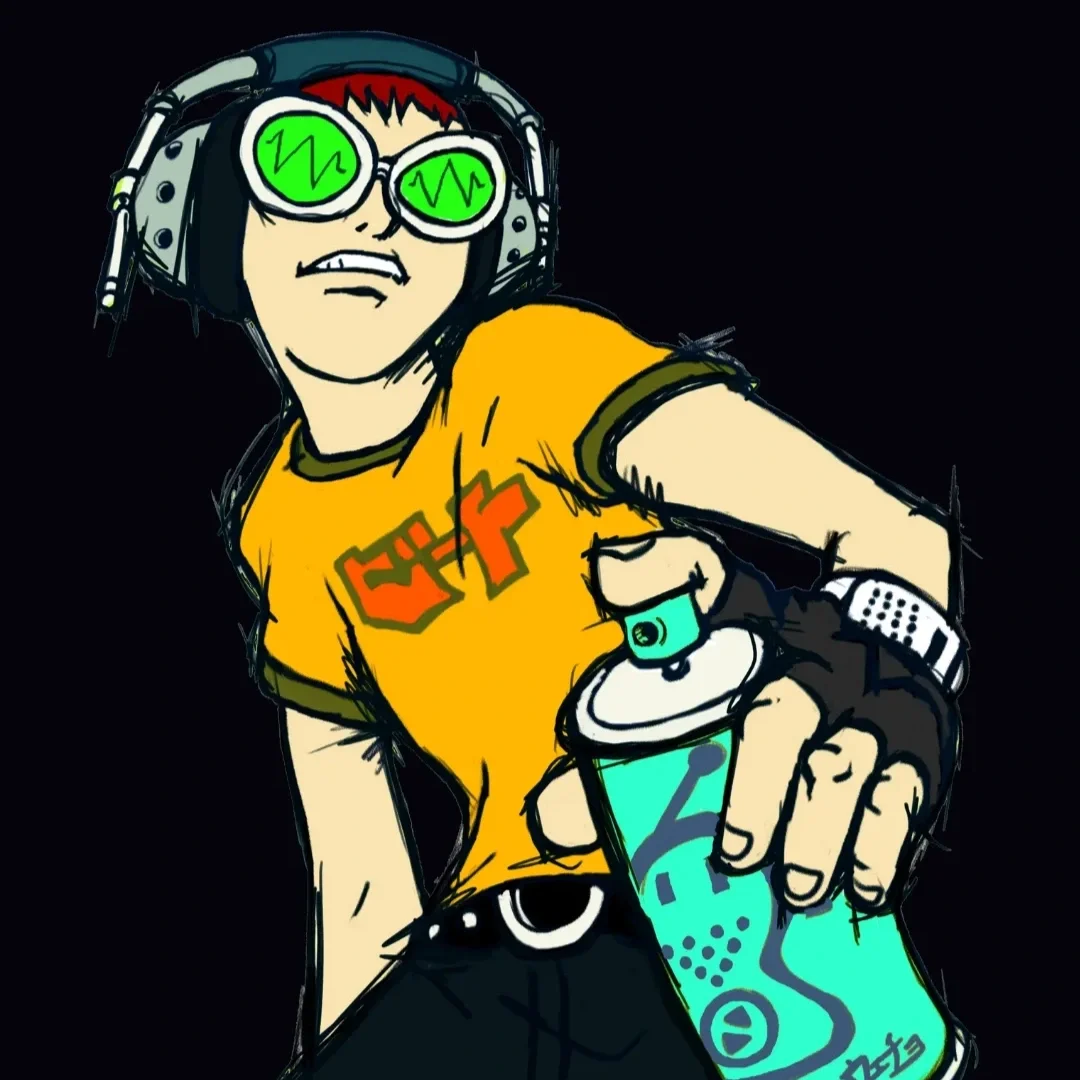
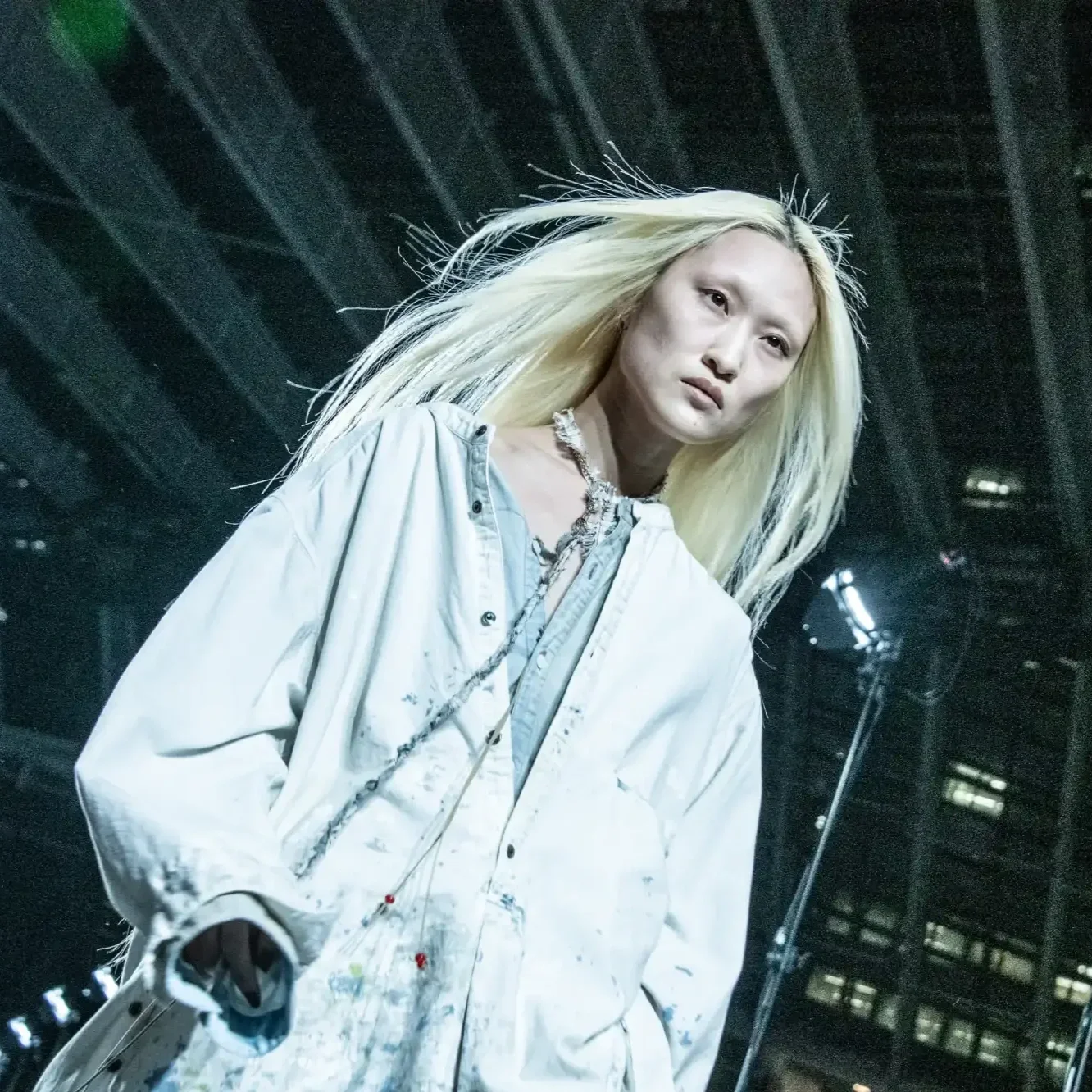
Nujabes' Impact on Anime’s most Iconic Soundtrack.